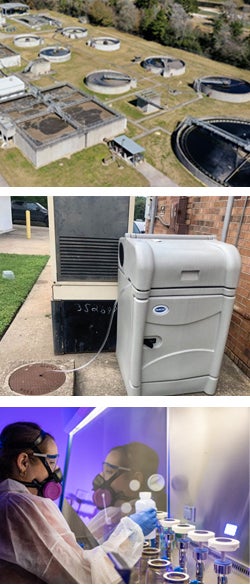
Houston is the fourth most populous city in the nation with one of the largest separate sewer systems. The city owns and operates 39 wastewater treatment plants and a collection system, which serves over two million people. The system includes more than 6,000 miles of sewer lines, 390 lift stations, and more than 120,000 manholes.
Since May 2020, the Houston Wastewater Epidemiology team has been collecting and analyzing 24-hour time-weighted samples from city-owned wastewater treatment plants each week. The team collects weekly samples from over 100 additional locations within the sewershed at manhole locations that serve schools, homeless shelters, the jail, nursing homes, and lift stations.
Samples are analyzed at two laboratories: the Stadler Laboratory at Rice University and the Houston Health Department Laboratory. The concentration of SARS-CoV-2 is determined in each sample using a process that includes concentration, extraction and purification of nucleic acids, and quantification of SARS-CoV-2 genes.
In addition to determining the concentration of SARS-CoV-2 in the samples, the team also enriches and sequences the genomes of SARS-CoV-2 in the wastewater treatment plant samples. Sequencing data is used to screen for variants of concern.
